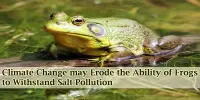Jars of tiny platypus and echidna specimens discovered at Cambridge’s University Museum of Zoology’s storeroom date from the late 1800s and were collected by scientist William Caldwell.
These specimens were crucial in establishing that some mammals lay eggs at the time of their acquisition, a finding that revolutionized the trajectory of scientific thought and backed the idea of evolution.
The Museum had not cataloged this one-of-a-kind collection, so personnel had been unaware of its existence until recently. Jack Ashby, the Museum’s Assistant Director uncovered the intriguing discovery, while conducting research for a new book on Australian mammals.
“It’s one thing to read the 19th-century announcements that platypuses and echidnas actually lay eggs. But to have the physical specimens here, tying us back to that discovery almost 150 years ago, is pretty amazing,” said Ashby.
He added: “I knew from experience that there isn’t a natural history collection on Earth that actually has a comprehensive catalogue of everything in it, and I suspected that Caldwell’s specimens really ought to be here.”
He was right: A tiny box of specimens was discovered in the Museum three months after Ashby instructed Collections Manager Mathew Lowe to keep an eye out for them, with a note indicating they were Caldwell’s. The findings of Ashby’s study corroborated this.
Platypuses and echidnas are not weird, primitive animals as many historic accounts depict them they are as evolved as anything else. It’s just that they’ve never stopped laying eggs; I think they’re absolutely amazing and definitely worth valuing.
Jack Ashby
Until the 1790s, when Europeans first saw platypuses and echidnas, it was considered that all mammals gave birth to live babies. The subject of whether some animals lay eggs became one of the most contentious issues in nineteenth-century zoology, with heated debate among scientists. The recently discovered collection of small jars symbolizes the enormous scientific effort that went into uncovering this riddle.
“In the nineteenth century, many conservative scientists didn’t want to believe that an egg-laying mammal could exist, because this would support the theory of evolution the idea that one animal group was capable of changing into another,” said Ashby.
He added: “Lizards and frogs lay eggs, so the idea of a mammal laying eggs was dismissed by many people I think they felt it was degrading to be related to animals that they considered ‘lower life forms.’”
Echidnas, platypuses, and marsupials in various stages of development, from fertilized egg to puberty, are included in the newly discovered collection. Although not all of the specimens have been located in the Museum, Caldwell was the first to make complete collections of every life stage of these species.
For 85 years, European naturalists have tried to prove that platypuses and echidnas lay eggs, including by interviewing Aboriginal Australians, but their findings have been ignored or ridiculed.
In 1883, William Caldwell was dispatched to Australia with large funding from the University of Cambridge, the Royal Society, and the British government in order to answer the long-standing riddle.
Caldwell gathered roughly 1,400 specimens with the help of a big group of Aboriginal Australians during an intensive search. In 1884, the crew discovered an echidna carrying an egg in her pouch, as well as a platypus with one egg in her nest and another about to be laid.
Caldwell had been seeking for definitive confirmation, and the news was broadcast throughout the world. The colonial scientific establishment appeared to only accept this result once it had been validated by “one of their own.”
According to Ashby, scientists have consistently denigrated Australian mammals over the last two centuries by labeling them as weird and inferior. He feels that rhetoric like this continues to influence how we define them now, undermining conservation efforts.
“Platypuses and echidnas are not weird, primitive animals as many historic accounts depict them they are as evolved as anything else. It’s just that they’ve never stopped laying eggs,” he said, adding, “I think they’re absolutely amazing and definitely worth valuing.”
The most common mammal in Australia is the quill-covered echidna. They are found across the continent and have adapted to live in a variety of conditions, from snow-capped mountains to the driest deserts.
Platypuses are one of the few mammals capable of detecting electricity, as well as one of the few mammals capable of producing venom. When the first examples were sent to Europe, they were mistaken for fakes because they featured a beaver tail, a flat bill, and webbed feet like a duck.
Platypuses and echidnas share a unique set of characteristics that 19th-century biologists believed should only be found in mammals, reptiles, or birds. As a result, they became a focal point in evolution arguments.
Ashby’s new book, Platypus Matters: The Extraordinary Story of Australian Mammals, is published in the UK on 12 May, 2022 by Harper Collins.
















